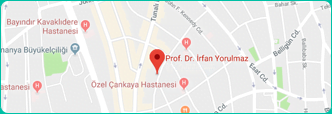Endoscopic sinus surgery (ESS), is a surgical technique highly popularized in the world after 1990s. In ESS, an endoscope is inserted into the nose, providing the doctor with an inside view of the sinuses. Surgical instruments are inserted alongside the endoscope. This allows the doctor to remove small amounts of bone or other material blocking the sinus openings and remove growths (polyps) of the mucous membrane. A small rotating burr that scrapes away tissue may also be used.


Healthy sinuses are able to drain their secretions into the nose through narrow clefts or openings. Chronic sinusitis results in blockage of these openings and ESS aims to enlarge them to make the sinuses to have adequate ventilation and drainage.
The surgery is done in a hospital, usually under general anesthesia. The procedure takes 1 to 3 hours, depending on the thpe and extent of sinusitis.
What happens after surgery?
- Minor discomfort and bleeding are common during the first 2 weeks after surgery.
- The nose may be packed to absorb bloody drainage.
- Antibiotics are commonly prescribed.
- A humidifier to keep room air moist is very useful, especially in the bedroom.
- Saltwater washes (saline nasal lavage or irrigation) will keep the nasal passages moist.
- A nasal spray containing a steroid may be used for months to reduce inflammation.
- Weekly visits to the surgeon may be necessary for about 3 to 6 weeks after the surgery to have dried blood and mucus removed.
- Activities such as blowing the nose, exercising strenuously, and bending forward should be avoided for three weeks.
Are there any risks?
As with any surgery, there are always some risks involved. Sinuses are sorrounded by critical structures such as the eye, lacrimal duct, optic nerve (nerve responsible from transfer of vision from the eye to the brain), membranes surrounding the brain, major vessels carrying blood to the brain etc. Therefore, these structeres need to be cared during ESS. Endoscopic sinus surgery is very safe when performed by an experienced surgeon who has special training with endoscopic surgical techniques.
Minor complications (such as scar tissue attaching to nearby tissue, or bruising and swelling around the eyes, recurrence of infection) occur in a small number of people who have the surgery. Major complications (such as heavy bleeding, eye area injury, or brain injury) occur in fewer than 1 out of 100 cases. Most complications of endoscopic sinus surgery can be managed or prevented.
Can chronic sinusitis reoccur after surgery?
Yes, this is possible. Endoscopic surgery improves symptoms in about 80% of patients, but some people may need a second operation.
What to expect after surgery?
- If you have packing material and splints in your nose, make sure they stay in place. If the packing gets clogged, breathe through your mouth. Do not remove the packing or splints. Your doctor will remove them when appropriate.
- Some bleeding is normal for 2 to 3 days after your operation. If you think you are bleeding a lot, be sure to call your doctor.
- Use your medications regularly as recommended.
- Keep your head elevated to help reduce bleeding and swelling after your operation. The first night after surgery, elevate your head with extra pillows or sleep in a recliner.
- Don’t blow your nose for 3 weeks after surgery. Don’t do any heavy lifting, straining, or strenuous exercise. This increases the likelihood of bleeding in your nose.
- If you have to sneeze, try doing it with your mouth open.
- Don’t take aspirin. It slows clotting and increases bleeding.
- Swelling in the nose is normal for 2-3 weeks and you may experience some blockage.
- Healing is completed in 2-6 weeks after surgery.
Are there any situations other than chronic sinusitis where ESS is performed?
- Rapair of cerebrospinal fluid leakage into the nose and sinuses
- Removal of some tumors of the nose and sinuses
- Pituitary surgery
- To open lacrimal canal blockage [endoscopic dacryocystorhinostomy]
- To control severe nosebleeds
- Injuries of the optic nerve [optic nerve decompression]
- To releive thyroid ophtalmopathy [orbital decompression]


